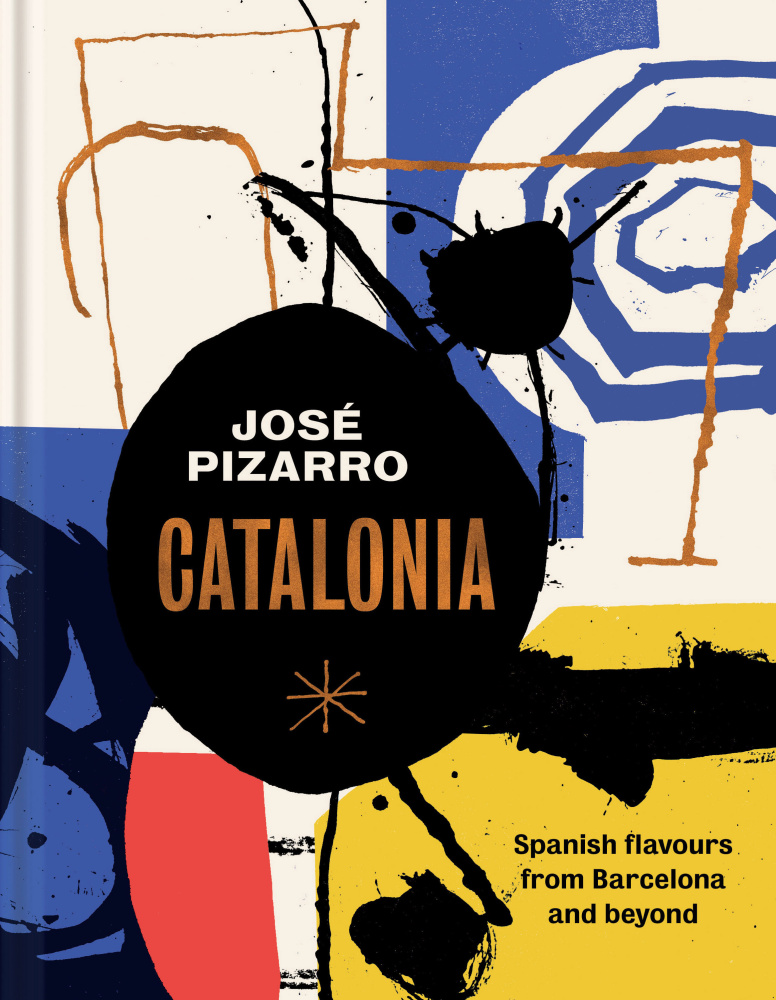“Catalonia: Recipes from Barcelona and Beyond.” By José Pizarro. Hardie Grant Books. $40.
Everybody knows someone who cannot pass up the opportunity to discuss their time abroad. As the years go by, the details of the experience fade, but not their eagerness to talk about it. I am, I’m embarrassed to say, this monster at parties. If I even think I hear the word manchego, my brain short- circuits. A sea of Spain-related anecdotes spew out of me – and generally no one cares.
In his new cookbook, “Catalonia,” Spanish chef José Pizarro has a similar annoying habit. Every recipe in the book, which, as the name suggests, explores Spain’s most northeastern region (it includes Barcelona), is accompanied by a short, jealousy-inducing story that describes the oh-so-charming way he encountered the dish. The anecdotes – often shout-outs to friends, descriptions of quaint village markets, visits to obscure artisanal butchers and such – can get tiresome.
But I’m quibbling. If Pizarro had not gone to the market in Palafrugell and chatted with the many farmers there, I would not have his delicious ox cheek recipe.
And Pizarro turn out such captivating recipes with ease in “Catalonia.” If you’re willing to tackle a handful of them – ranging from seafood dishes to palate cleansers to robust and satisfying stews to desserts – you’ll get a well-rounded introduction to Catalan cuisine. It’s a food with influences from many lands, among them Greece, Italy and the Mid East.
The recipes in “Catalonia” are easy to follow, and give home cooks just enough autonomy to make them feel like they are really chef-ing. The cook times are often windows of time as opposed to exact minutes, with descriptions of the intended results so you can use your own judgment. When, for instance, Pizarro asks for something to be pan-fried until soft, chef you is allowed to interpret soft however you like.
Of course, it’s no surprise the recipes are good. Pizarro is lovingly referred to as “The Godfather of Spanish Cooking” in the United Kingdom, where he lives and owns several critically acclaimed restaurants that bear his name. He’s equally well regarded in his homeland: In 2014 he landed on the “100 Españoles” list, an award for Spaniards whose work gives an exceptional representation of Spanish culture and heritage to the world.
“Catalonia” would fit on your coffee table as easily as in your kitchen – it’s a beautiful book, from the abstract Miro-esque cover (Jean Miro was born in Barcelona), to the stunning photographs of Pizzaro’s dishes as well as Catalan life and landscapes. The latter, though a far remove from ingredients lists and kitchen techniques, reminded me what a regional cookbook is really about: It’s the people, history and resources of an area that make the book a possibility in the first place.
Winter’s first snowfall inspired me to test a hearty, fortifying braised dish, Pizarro’s Slow-Cooked Ox Cheek in Spicy Tomato Sauce. The dish confirmed what grandmothers everywhere have known since the dawn of time: If you cook anything low and very slow, even the simplest of dishes will please.
Paul Pedersen is a student at the University of Southern Maine, who just finished an internship in the features department of the Portland Press Herald.
Slow-Cooked Ox Cheek in Spicy Tomato Sauce
When our reviewer made this, he served the braised meat separately from the sauce, with potatoes. The next day, he used the leftover sauce to top lightly fried eggplant.
Serves 6
4 tablespoons olive oil
1.5 kg (3 lb, 5 oz) ox cheek, in large chunks
2 tablespoons plain (all-purpose) flour, to dust
1 large onion, finely chopped
2 carrots, finely chopped
1 stalk celery, finely chopped
6 anchovies, chopped
2 teaspoons sweet smoked pimentón
2 teaspoons hot smoked pimento
Handful fresh thyme sprigs
300ml (10 fl oz) red wine
2 x 400 g (14 oz) tins chopped tomatoes
150 ml (5 fl oz) chicken stock
Heat half the oil in a casserole dish. Dust the ox cheek in the plain flour with plenty of seasoning, add to the dish and brown in batches. Set aside.
Heat the rest of the oil in the pan and fry the onion, carrot and celery for 10 minutes until softened. Add the anchovies and pimentón and cook for a minute. Then add the thyme and red wine and bubble until reduced by half.
Add the tomatoes and stock and bring to the boil. Simmer gently, covered for 2 hours. Uncover and cook for a further 30 minutes to 1 hour, or until the ox cheek is really tender and the sauce reduced and thickened. Rest for 15 minutes before serving.
Send questions/comments to the editors.




Comments are no longer available on this story